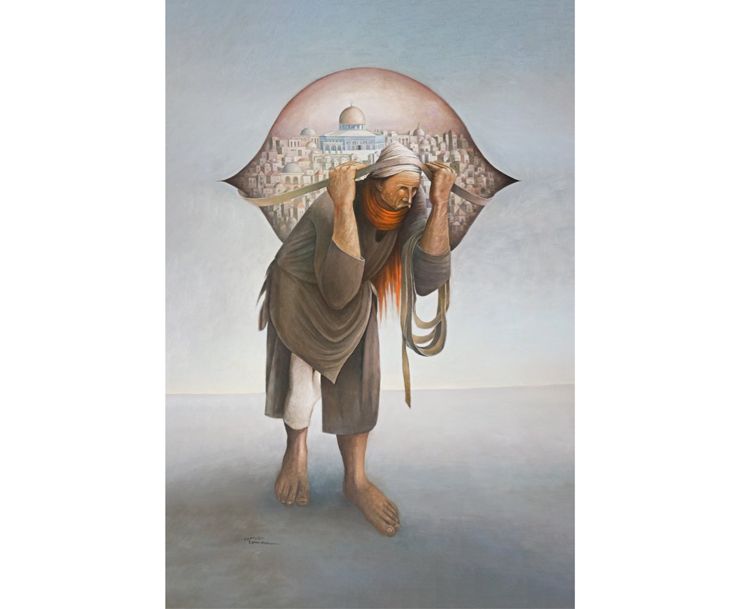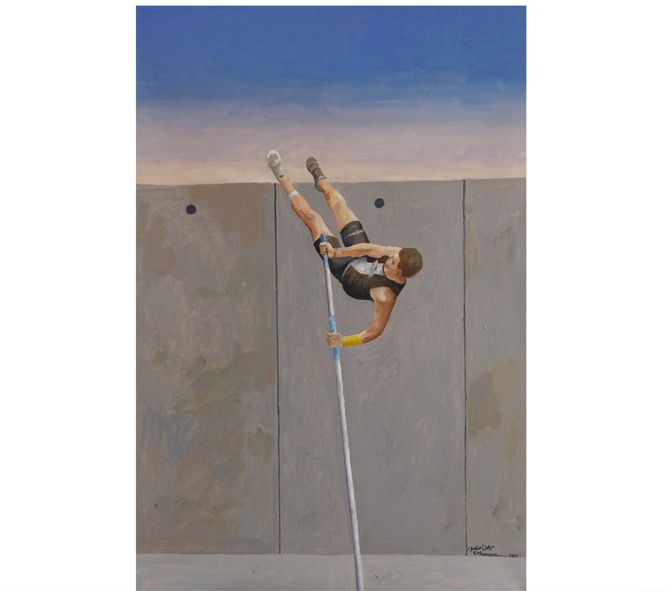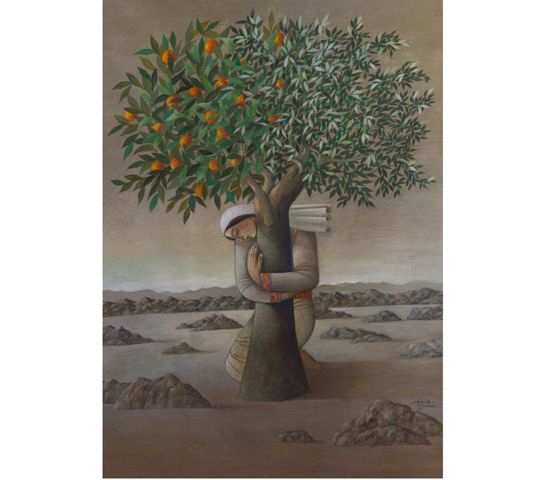The long-standing, unresolved conflict between Palestine and Israel made ripples in numerous directions over the years, impacting thousands of civilians and institutions by destabilizing both the population’s morale and the economic and cultural growth of the Palestinian community.
Last year’s takeover of Gaza is still wreaking havoc with militant groups such as Hamas killing numerous civilians by launching rocket missiles and Israeli airstrikes being a constant presence in the lives of the ones living on the frontlines.
The continuous dispute has led to outbursts of various protests and activist movements around the world, with art playing a major role. Artists have banded together, selling prints, doing Instagram Lives, and even making NFTs to support the victims of the conflict.

The sharp curtail of freedom enforced by Israeli police also reaches the steps of culture, with multiple galleries being raided by the IDF and collectors and gallerists packing some of their paintings and sculptures in fear of destruction by rockets being launched near the institutions.
In the light of this situation, there is a figure who has been part of the resistance movement for decades, showing that art can be a crucial part of the fight against Israeli apartheid. This figure is Sliman Mansour, whose paintings help portray the mind and atmosphere of the Palestinian people — gateways to their experiences of displacement and the developments and transformations of the Palestinian national movements.
As an artist born in 1974 in Birzeit, a year before the establishment of the State of Israel, Mansour remarks on the effect the constant government destabilization had in his work. From an early age, the artist bears the brunt in the fight for Palestinian people, with works such as Camel of Hardships (1974) and Woman with Jerusalem (1978), responding to Israel occupation, where people have to bear the burden of their homeland.
“It has been a very difficult journey and very interesting. You know the problem of an occupied territory is that it is full of ideas,” the artist explains. “I mean full of contradictions and that is very interesting for the artists. I consider my work part of the Palestinian people’s life. It reflects that life, the feeling of the people.”

In the fragile atmosphere of the country, Mansour started his career depicting women in traditional embroidered dresses as a symbol of Palestinian land and the Palestinian revolution. In 1980, when taking part in a movement that boycotted Israeli supplies, his symbology evolved. Using natural and local materials in his pieces — mud and henna — the artist created artworks that are even more politically charged, translating his experiences of displacement, community and rootedness using imagery that would contribute to the iconography of the Palestinian revolution.
The escalating tension after the events of May 2021 led Mansour to create a series of mesmerizing paintings that embody the unwavering resolve in the face of relentless military occupation. One of these paintings is Breaking Free, which depicts an athlete attempting to pole vault the occupation wall, and From the River to the Sea, a portrait showing a woman embracing a morphed orange and olive tree that raises the buzz around the current state of affairs between Palestinians and Israelis.
“I can feel the difference between one time and the other (political changes). The thing that happens here is that feelings change. In the 70s, 80s, there was a lot of euphoria, a lot of hope for the future and people were helping each other,” Mansour conveys in an interview. “When the PNA started all these feelings were lost and people changed. Their attitude to life, their attitude to occupation… people lost part of the hope they used to have.”

Mansour’s representations of Palestinian struggles and culture have travelled the world, becoming a searing reminder of the personal emotions and circumstances of someone living in an occupied country. In return, his unshaken commitment to justice and culture addresses the United Nations Sustainable Development Goal for Peace, Justice and Strong Institutions, a stepping stone for the dissemination of the Palestine resistance inside the walls.
Despite the incessant bloodshed and attacks, the Palestinian people learned to reassemble the pieces of a broken past, relighting hope for a better future, and the recent support generated by artists and activists around the world have played an important role.
Support Mansour’s work here.
